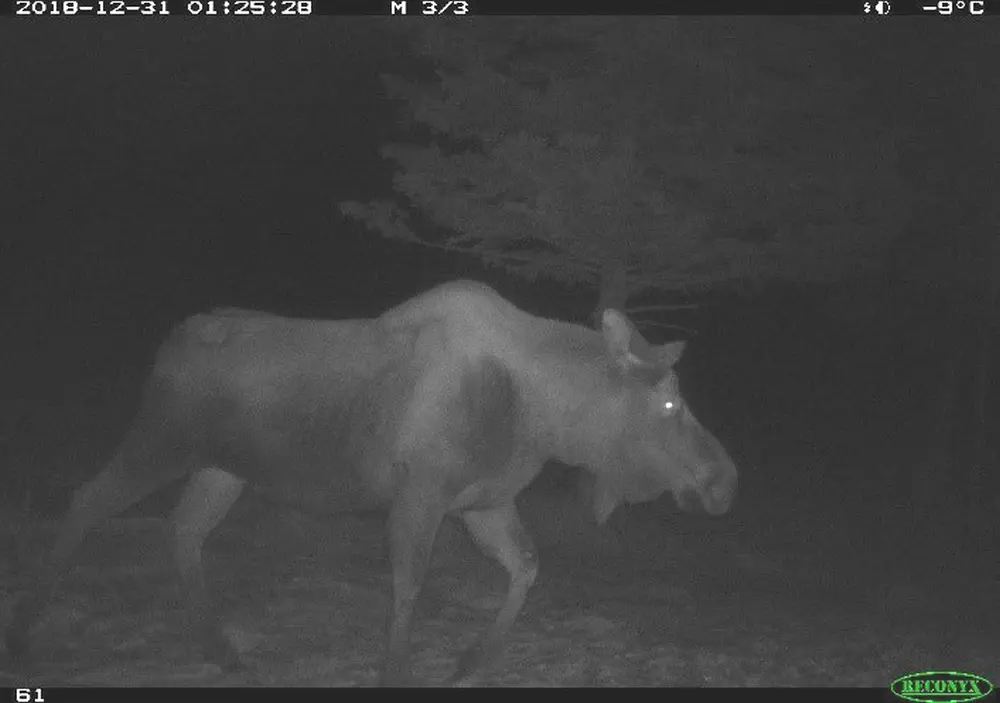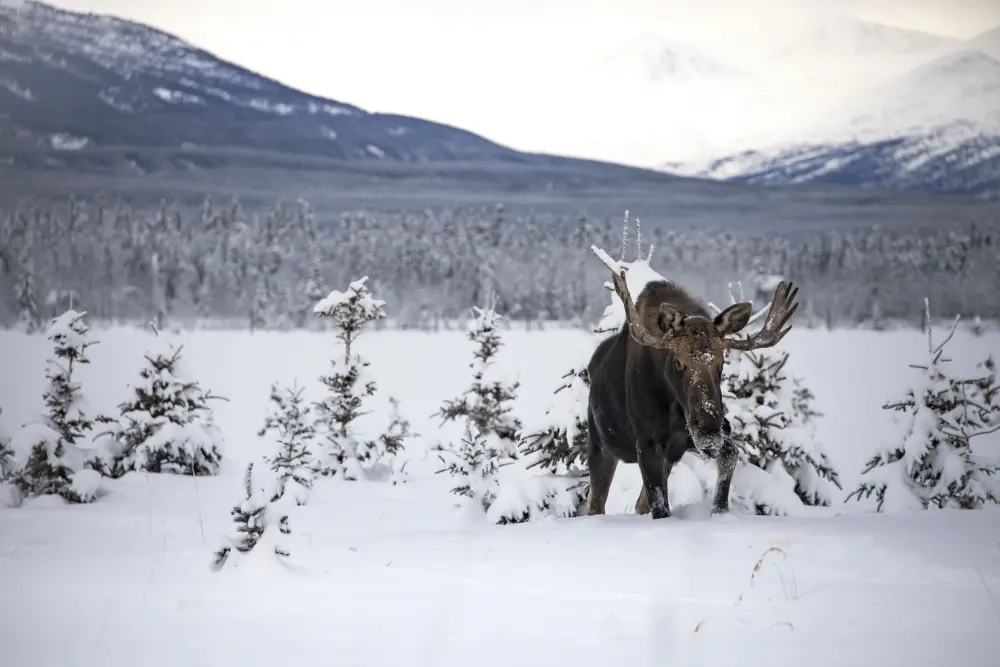
Moose Hair Loss Study
Ever had an itch you just can’t scratch? For moose and other large deer species, winter ticks are an annual burden. These blood-feeding parasites live for only one year and spend almost their whole life on the same host. Moose are often the worst affected – and although a few ticks on an individual is no big deal, winter tick numbers can sometimes reach 50,000-100,000 ticks per animal. These severely infested moose just keep scratching, trying to rid themselves of the parasites, and may lose large amounts of blood, valuable time feeding, and significant amounts of hair. The distinct patterns of tick-induced hair loss are most noticeable on moose from March to May when the ticks are at their largest, and is a key indicator that winter ticks are present in a region. Hair loss can range from very mild, with just a few patches on the shoulders and neck, to extremely severe or “ghost moose”, which have damaged or missing hair over more than 80% of their body.


wildlife cameras were installed in the moose enclosure in December 2018. These cameras automatically take a photograph every time a moose walks past, and will continue to capture thousands of images each month until May.
scale study that looks at winter tick spread under climate change throughout North America.

Interested in Contributing?
Environment Yukon’s Animal Health Unit in Whitehorse. Yukon Winter Tick Monitoring Project.


Emily Chenery
Guest Researcher / Author

Harvested a moose in Ontario during December with 5”x5” inch square patch hair rubbed of top of rump only. Did not see ticks? What else could cause this? Tapeworm of some kind?
Interesting! Something to perhaps connect with your local agency. With that being said, knowing that winter ticks can cause this noticeable hair loss and their cycle they can be larvae stage or quite small still so seeing one would possibly need a microscope. The recommendation is to collect several patches of skin (and ticks) from around edges of hair loss and report/submit. Gut parasites can also interfere with the absorption of essential nutrients – critical in summer and through to fall, leading to deficiencies that may contribute to hair loss.